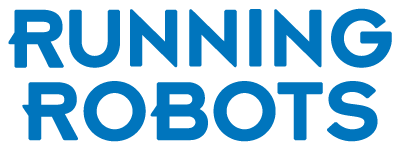Introduction
As Artificial Intelligence continues to revolutionize industries, the pressing need to balance safety and speed in AI development has become more pronounced. This conundrum, referred to as the Safety-Velocity Paradox, highlights the tension between rapidly evolving AI technologies and the urgent need for stringent safety measures. The paradox underscores a fundamental question: Can the AI industry accelerate development without compromising safety? This article dives into this intricate balance, examining the paradox’s implications on the path to creating advanced AI systems, including the elusive Artificial General Intelligence (AGI).
Background
AI technology has exponentially evolved over the past decades, elevating both functionalities and capabilities to unprecedented levels. As industry stalwarts like OpenAI, Google, and xAI spearhead these advancements, they also carry the onus of developing ethical AI systems. Herein lies the Safety-Velocity Paradox—a situation where the rapid pace of AI development often overshadows critical safety evaluations necessary for responsible deployment.
These concerns have grown parallel to AI’s evolution. With companies like OpenAI tripling their headcount to over 3,000 to accelerate development, as noted in Artificial Intelligence News, there arises a dilemma of how these innovations enter the market swiftly and safely. Key players like OpenAI and Google are thus pivotal in upholding the standards of ethical AI development, ensuring that progress does not come at the cost of oversight or accountability.
Current Trends in AI Development
The velocity of AI advancement today is undeniable—echoed by the rapid deployment of new models and systems. However, with increased speed comes heightened risk, especially when safety procedures are overlooked. Boaz Barak, a Harvard professor, poignantly debates this by emphasizing the lack of transparency and safety evaluations in new AI model launches. In a race where \”the race to create AGI is not about who gets there first; it is about how we arrive,\” the industry’s inclination to prioritize speed over safety becomes a critical concern.
Industry insights reveal a concerning trend where not all developments see the light of day due to insufficient safety scrutiny. As Calvin French-Owen notes, a significant proportion of AI work is often unpublished, reflecting gaps in industry transparency. The industry’s relentless pursuit to outpace competitors in the AGI race further compounds these dangers, risking the unleashing of potentially harmful AI models without rigorously testing them for safety (Artificial Intelligence News).
Insights from the AI Industry
The discourse on AI safety versus speed has given rise to diverse perspectives within the industry. Transparency and accountability have emerged as cornerstones for responsible AI practices. Anthropic, among other think tanks, argues for a cultural shift towards constructive AI development, stressing collective responsibility for safety akin to a communal lighthouse guiding ships safely through treacherous waters—each entity has a crucial role in ensuring safe passage.
The industry must embrace a collaborative ethos, where AI labs acknowledge interdependencies and prioritize regulatory measures that complement the technological advances. Articles consistently emphasize this need for a paradigm shift, advocating that safety should form the bedrock upon which swift advancements are erected.
Future Forecast for AI Development
Looking ahead, solving the Safety-Velocity Paradox necessitates embedding ethical AI principles into the core of development processes. This integration can ensure that the velocity of advancements harmonizes with robust safety measures. As industry dynamics evolve, there is potential for a model where ethical considerations foster sustainable innovation, redefining norms to prevent safety from being an afterthought.
Predictively, the future could see AI companies increasingly operate in transparency, collaboratively sharing research to bolster community-wide safety standards. Such principled synergy may redefine competition—no longer simply about speed but liked to safety-led progress that benefits the broader societal good.
Call to Action
As stakeholders in the AI continuum, it is incumbent upon us to advocate for this balanced approach in AI development—where safety goes hand-in-hand with innovation. We invite readers to engage in this conversation, becoming proponents of accountability and ethical AI practices. By staying informed and holding industry players to higher standards, we can collectively ensure that the industry’s quest for speed does not eclipse the imperative of safety.
For enriched, continuing discourse on AI safety and rapid development, readers are encouraged to subscribe to AI safety news and join communities dedicated to ethical AI progression. Together, we can steer AI development towards brighter, safer horizons.








